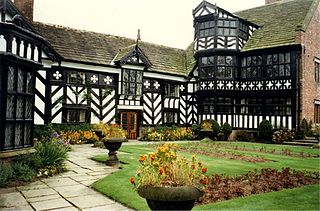
Gawsworth Old Hall is a Grade I listed country house in the village of Gawsworth, Cheshire, England. It is a timber-framed house in the Cheshire black-and-white style. The present house was built between 1480 and 1600, replacing an earlier Norman house. It was probably built as a courtyard house enclosing a quadrangle, but much of it has been demolished, leaving the house with a U-shaped plan.
Baron Egerton, of Tatton in the County Palatine of Chester, was a title in the Peerage of the United Kingdom. It was created on 15 April 1859 for William Egerton (1806–1883), a politician from the Egerton family.

Eaton Hall is the country house of the Duke of Westminster. It is 1 mile (2 km) south of the village of Eccleston in Cheshire, England. The house is surrounded by its own formal gardens, parkland, farmland and woodland. The estate covers about 10,872 acres (4,400 ha).

High Legh is a village, civil and ecclesiastical parish in the unitary authority of Cheshire East and the ceremonial county of Cheshire, England. It is Six miles (10 km) north west of Knutsford, seven miles (11 km) east of Warrington and twelve miles (19 km) south west of Manchester City Centre. The population of the entire civil parish was estimated at 1,705 in 2019.
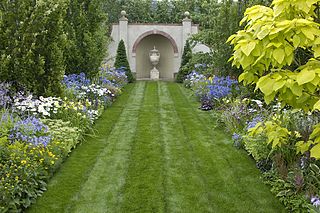
RHS Flower Show Tatton Park held at Tatton Park, near Knutsford, Cheshire, first began in 1999 by the Royal Horticultural Society. The show houses the RHS National Flower Bed Competition, Young Designer of the Year Award and a wide range of inspirational show gardens, smaller 'Back to Back' gardens, visionary gardens and a number of marquees displaying prize plants and flora exhibits. Other key features of the show are the floral marquee and plant plaza, the arts and heritage pavilion, and the floral design studio.

A fernery is a specialized garden for the cultivation and display of ferns.

The Christchurch Botanic Gardens, located in the central city of Christchurch, New Zealand, were founded in 1863 when an English oak was planted to commemorate the solemnisation of the marriage of Prince Albert and Princess Alexandra of Denmark. The gardens sprawl over an area of 21 hectares and lie adjacent to the loop of the Avon River next to Hagley Park. The Christchurch Botanic Gardens have a variety of collections of exotic and local plants of New Zealand, several conservatories, a nursery, playground and Climatological Station.

The New Orleans Botanical Garden is a botanical garden located in City Park, New Orleans, Louisiana. The first classical garden in New Orleans, it was funded by the Works Progress Administration.
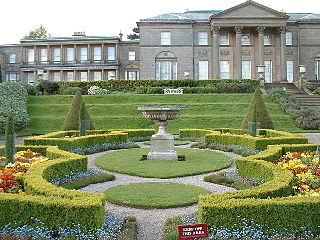
Tatton Park is a historic estate in Cheshire, England, north of the town of Knutsford. It contains a mansion, Tatton Hall; a medieval manor house, Tatton Old Hall; Tatton Park Gardens, a farm and a deer park of 2,000 acres (8.1 km2). It is a popular visitor attraction and hosts over a hundred events annually. The estate is owned by the National Trust and is managed under lease by Cheshire East Council. Since 1999, it has hosted North West England's annual Royal Horticultural Society flower show.
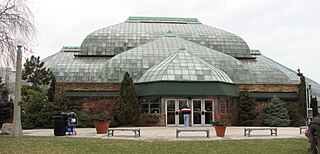
The Lincoln Park Conservatory is a conservatory and botanical garden in Lincoln Park in Chicago, Illinois. The conservatory is located at 2391 North Stockton Drive just south of Fullerton Avenue, west of Lake Shore Drive, and part of the Lincoln Park, Chicago community area. The Alfred Caldwell Lily Pool and the North Pond Nature Sanctuary are further to the north along Stockton Drive. Along with the Garfield Park Conservatory on Chicago's west side, the Lincoln Park Conservatory provides significant horticultural collections, educational programs and community outreach efforts.

The Morris Arboretum & Gardens of the University of Pennsylvania is the official arboretum of the Commonwealth of Pennsylvania. The Arboretum is open daily except for major holidays. It is located at 100 East Northwestern Avenue, Chestnut Hill, Philadelphia, Pennsylvania.

Tatton Hall is a country house in Tatton Park near Knutsford, Cheshire, England. It is designated as a Grade I listed building and is open to the public.
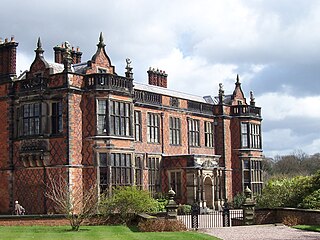
Arley Hall is a country house in the village of Arley, Cheshire, England, about 4 miles (6 km) south of Lymm and 5 miles (8 km) north of Northwich. It is home to the owner, Viscount Ashbrook, and his family. The house is a Grade II* listed building, as is its adjacent chapel. Formal gardens to the southwest of the hall are also listed as Grade II* on the National Register of Historic Parks and Gardens. In the grounds are more listed buildings, a cruck barn being listed as Grade I, and the other buildings as Grade II.

In the early 18th century the Oulton Estate was home to the Egerton family and comprised a manor house and a formal garden surrounded by farmland in Cheshire, England. Later in the century the farmland was converted into a park. The estate is now the site of the motor racing track called Oulton Park.

Tatton Old Hall is a historic building in Tatton Park near Knutsford, Cheshire, England. It is designated by English Heritage as a Grade II* listed building which is owned by the National Trust and administered in conjunction with Cheshire East Council. It is also known as one of the most haunted houses in Britain and is home to The Haunted Hunts official haunted collection. Paranormal investigations take place on a monthly basis under the guidance of The Haunted Hunts team. Its site is a Scheduled Ancient Monument.

Rowland Eyles Egerton-Warburton was an English landowner and poet from the Egerton family in Cheshire. He was a devout Anglican in the high church tradition and a local benefactor. He paid for the restoration of his parish church and for the building of two new churches in villages on his estates. He also built cottages and farm buildings in the villages.

Cook Park is a heritage-listed 4-hectare (10-acre) urban park at 24–26 Summer Street, Orange, a city in the Central West region of New South Wales, Australia. It was designed and built by Alfred Patterson from 1873 to 1950. It is also known as Orange Botanic Garden. It was added to the New South Wales State Heritage Register on 24 August 2018. The park's main entrance is from the corner of Summer Street and Clinton Street.

Rode Hall, a Georgian country house, is the seat of the Wilbraham family, members of the landed gentry in the parish of Odd Rode, Cheshire, England. The estate, with the original timber-framed manor house, was purchased by the Wilbrahams from the ancient Rode family in 1669. The medieval manor house was replaced between 1700 and 1708 by a brick-built seven-bay building; a second building, with five bays, was built in 1752; the two buildings being joined in 1800 to form the present Rode Hall.

The Anna Scripps Whitcomb Conservatory is a greenhouse and a botanical garden located on Belle Isle, a 982-acre (397-hectare) island park located on the Detroit River within Detroit, Michigan. While located near the Canada–United States border, the island is entirely within the U.S. The park itself consists of 13 acres of preserved land for the conservatory and its botanical garden.
Tatton is a former civil parish in Cheshire East, England. It contained 26 buildings that are recorded in the National Heritage List for England as designated listed buildings. Of these, one is listed at Grade I, the highest grade, two are listed at Grade II*, the middle grade, and the others are at Grade II. The major building in the parish was Tatton Hall, and all the listed buildings in the parish are related to it. These include the hall itself, Tatton Old Hall, the Home Farm, structures in the gardens and park, and lodges at the entrances to Tatton Park.






















